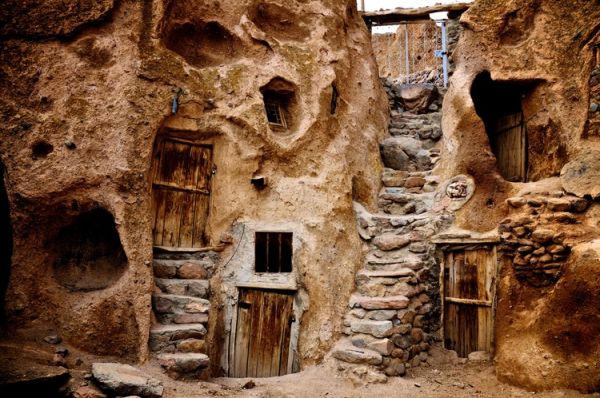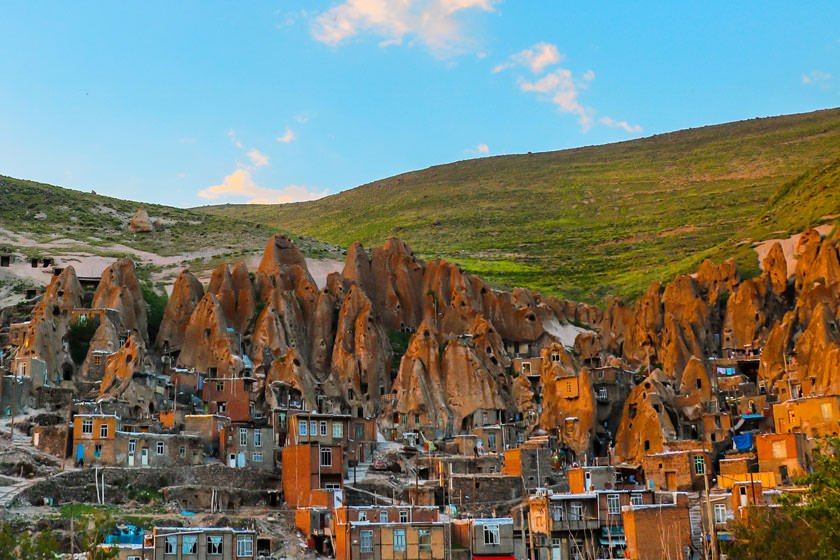Introduction to Kandovan Village
Kandovan Village is one of the well-known parts of East Azarbaijan province, located on the slopes of Sahand mountain, near Tabriz. A mysterious hamlet is built in the heart of the rocks and is famous for its beehive houses. This ancient village is one of the three rock villages in the world. The people are still living in stone houses dug in the heart of the mountain. Therefore, Kandovan Village is one of the living examples of rock architecture in the world.

History of Kandovan Village
The history of the settlement of Kandovan Village dates back to the seventh century AH. According to historical evidence, the inhabitants of Hilavar village were the first who entered Kandovan. The people of this village go to the Kenar plain, which means Kandovan, to escape the Mongol invasion. After a while, they started digging the mountain to build safe houses for themselves in the heart of the rocks; That’s how the history of Kandovan village began. This olden village takes its identity from the 117 families living in the heart of these rocks.

The architecture of this Village
The rock architecture and village houses that have been created by digging the rocks like Kaleh Ghand, (many years before now, Sugarloafs were produced like conical pyramids called Kalle Ghand) known as Kran, are the reason for the fame of Kandovan Village. Due to the molten material left over from the Sahand volcano eruption and human intervention, these rocks have been shaped over the years to create a stunning landscape.

The shape of the interior space and the number of floors of these Karans depend on their size. There are usually one-story or two-story, but there are also three and four-story Karans. In their structure, the ground floor is where the livestock is kept, the first floor is the residence, the second floor is the guest room, and the third floor [if any] is used as a warehouse. It is possible to connect the upper floors through unique and challenging stairs from the outside, but there is no way to get to the upper floors from inside the Karan. The spectacular architecture of these houses keeps them warm in winter from the inside. Also, in summer, it does the opposite and keeps the house cool. The natural mineral water spring that flows between the rocks has added to the charm of this village. Good to mention that the water of this spring also includes healing properties.

